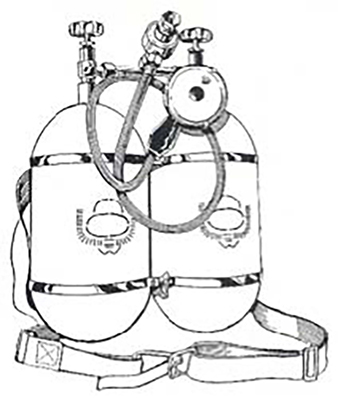 |
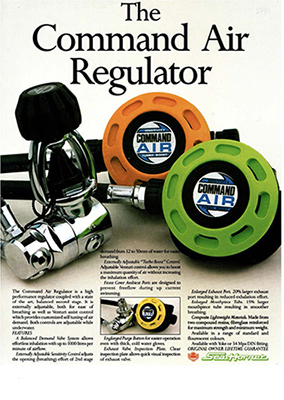 |
| Sea Hornet twin cylinder | Sea Hornet regulators |
Theodore Duncan (Bob) Preece was born in Sydney’s seaside suburb of Manly on the 6 May 1923. During the Second World War Bob Preece served in the Merchant Navy as a Radio Telegraph operator on board a vessel supplying Australian and American troops stationed in the South Pacific Islands. After the war Bob rented a small garage in Rolfe Street Manly and established his own business, making telegraph keys.
In 1952 Preece and Moir Engineering Co had been formed, making a range of tools for the automotive industry as well as hobby lathes. The partnership was dissolved with TD Preece & Co being registered as a company during 1954, with a move being made to newly purchased premises at 256 Condamine Street Manly Vale in 1955.
Using the brand name PREECO, the company produced a large range of precision tools for the automotive rebuilding industry, which included tension wrenches, valve lifters, timing gear, harmonic balancers and steering wheel pullers, king pin reamers and windscreen removing fitting tools. During 1957 the Glenn range of automotive spare parts was introduced. The company also produced evaporative coolers, 5BX exercise equipment, industrial fans, and stainless-steel oars.
Bob Preece had been introduced to diving by a friend and on 1 October 1958 opened the Manly Scuba Service at his Condamine Street premises. A range of diving equipment was offered for sale as well as Scuba instruction, then in 1959 he was awarded the contract to clean, maintain and look after the Australian Navy’s compressed air breathing apparatus. Later on, the Navy’s equipment servicing contract was given to Phillips Diving Services who continued servicing the navy’s equipment until they shut down in 1992.
In 1959, under the brand name of Sea Hornet the company made its first item of diving equipment, a two-piece hand spear made from brass tubing.
In 1960 the Sea Hornet CO2 speargun went into production. First produced with aluminium fittings, in 1963 it was changed to all brass construction.
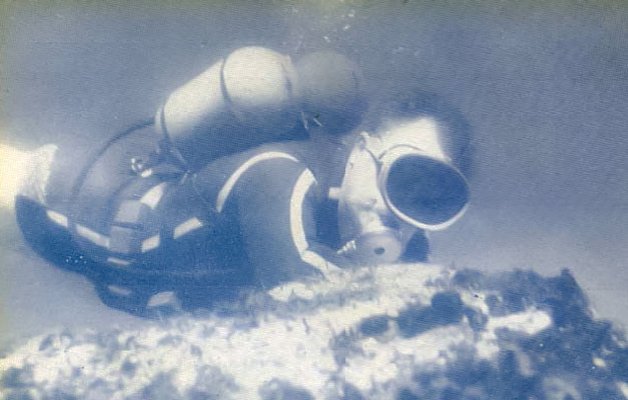 |
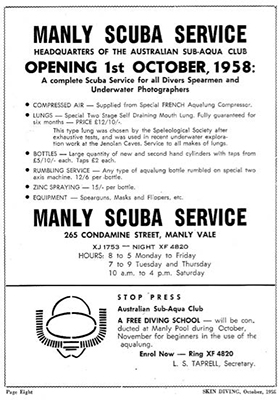 |
| Sea Hornet equipment | The Manly Scuba Service |
 |
| The telescopic hand lance of 1963 |
 |
| CO2 spear gun |
January of 1961 T.D. Preece announced their all new, all-Australian Sea Hornet aqualung with the following features - Amazing ease of breathing, long, high pressure hose ensuring unencumbered movement, simplicity of design, ease of maintenance, rugged construction, corrosion resistant finishes and materials, quick release safety belt, and zinc sprayed cylinders.
The Sea Hornet demand valve was based on the design used in the earlier Dawson FloMatic Scuba with the high-pressure reducer utilising a diaphragm design. A large quantity of ex WW2 26 cu. ft. nitrogen cylinders had been obtained and these had the protective wire binding removed and given a coating of zinc. These cylinders were fitted with a valve of more compact design than the medical oxygen valves that were in widespread use at that time.
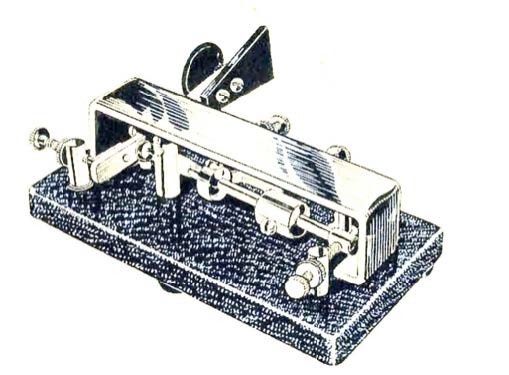 |
| The Preece Telegraph key |
In March 1961 ex-navy diver Wally Reynolds, while using Sea Hornet scuba accomplished a dive to 327 feet, about 12 miles east of Newport.
In 1962 the company announced a lung changeover plan, exchanging full bottles for empty bottles.
Believing that he could make a better speargun than any currently on the market Bob turned his attention to the design and manufacture of spearguns. In January of 1966, his first rubber Powered Speargun was introduced to the market. It was made from Tasmanian Oak and bronze coloured polypropylene fittings with a stainless-steel trigger mechanism cartridge. This speargun was later to be known as the Sportsman. In September, a tubular stainless steel speargun was introduced with black polypropylene fittings. This was later to be known as the Pacific. A succession of different models followed with the Tourist being next, using a tubular aluminium barrel and then the Premier, Recruit, Lazer, Magnum, Competition, Sea wolf and others. All were available with a range of barrel lengths and in deluxe versions.
After twelve years of concentration on the development and marketing of its speargun range, Sea Hornet re-entered the Scuba business in 1978 when it became the exclusive Australian distributor for the Sportsways Waterlung range of products. Sportsways was founded in the USA in 1958 by Frenchman Sam Lecocq, who designed and manufactured a single hose two stage regulator he named the Waterlung. In following years, the company’s range was extended to include tank valves, depth and pressure gauges, buoyancy control vests and basic equipment.
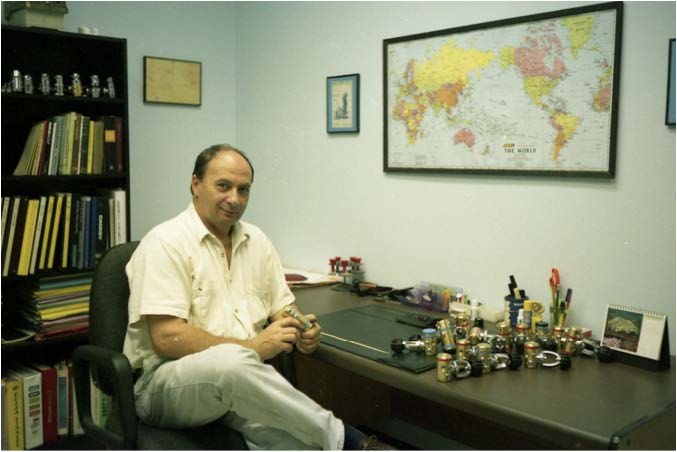 |
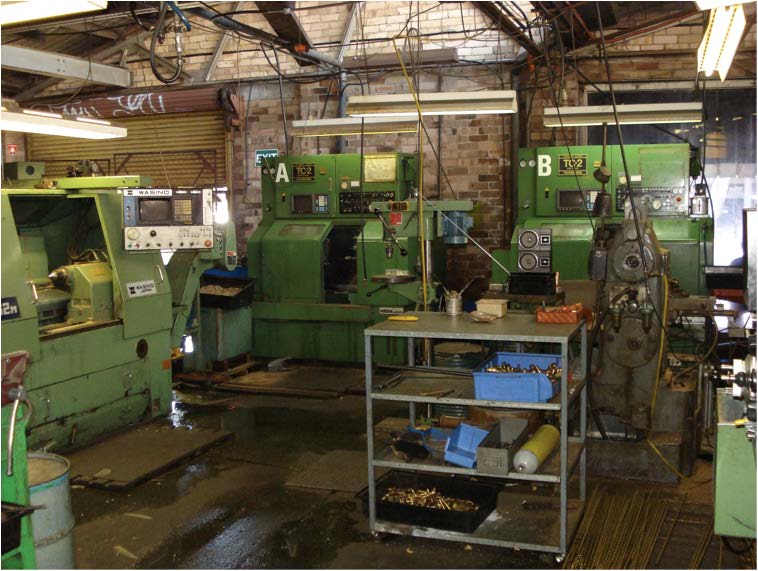 |
| T.D. Preece | SEA HORNET - The lab |
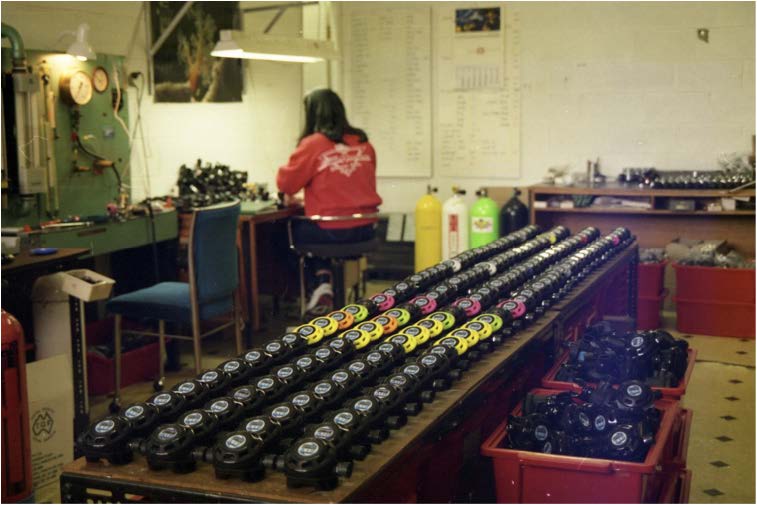 |
| The regulators department |
Then Peter Katz commenced working at Sea Hornet. Born in Czechoslovakia, Peter had begun diving with a gasmask, welding gas regulator and a few small cylinders of air during 1956, later progressing to making twin hose regulators. In 1962 Peter began working at the Research Institute of Engineering Studies at the Prague Technical University, where it was possible to continue to develop regulators in his free time.
In 1969 the Sportlimex company was established making a prototype of a single hose regulator named the Tajfun. As it did not perform as expected Peter was approached to remedy its performance and was offered a position in its R&D department, which Peter accepted in 1970. During its production run some 30,000 Tajfun regulators were made.
In 1972 Sportlimex merged with Aquacentrum where Peter designed their Tornado high performance single hose regulator. In 1979 Peter, with his wife Hana, escaped communist rule in Czechoslovakia to West Germany. He arrived in Australia in 1980, and two weeks later was working at Sea Hornet.
When Peter commenced at Sea Hornet the company was servicing its imported Sportsways regulators, but had no means of testing their performance. Peter designed and constructed a test panel to measure air flow and breathing performance.
As T.D. Preece had no design office Peter left after eight months to work for PM Anderson Industries, but continued to work for T. D. Preece on a contract basis.
The first Sea Hornet regulator for twenty years, the Sea Hornet Mk1, was introduced to the market in 1981. The Mk1 first stage was designed by Peter Katz, with the second stage being a slightly modified Waterlung unit.
In partnership with Hana, Peter began assembling and testing all Sea Hornet regulators from his home. This was in 1985.
In 1988 the factory was modernised and extended with a frontage in Kenneth Road. With a design office now created within the complex, Peter began full time work with the company as Chief Engineer and was responsible for the design of all their breathing equipment until his retirement in 2003.
Early in 1987 the diving community was shocked to learn of the passing of Bob Preece. Bob had contacted a staph infection while in hospital and died on the 2 February 1987.
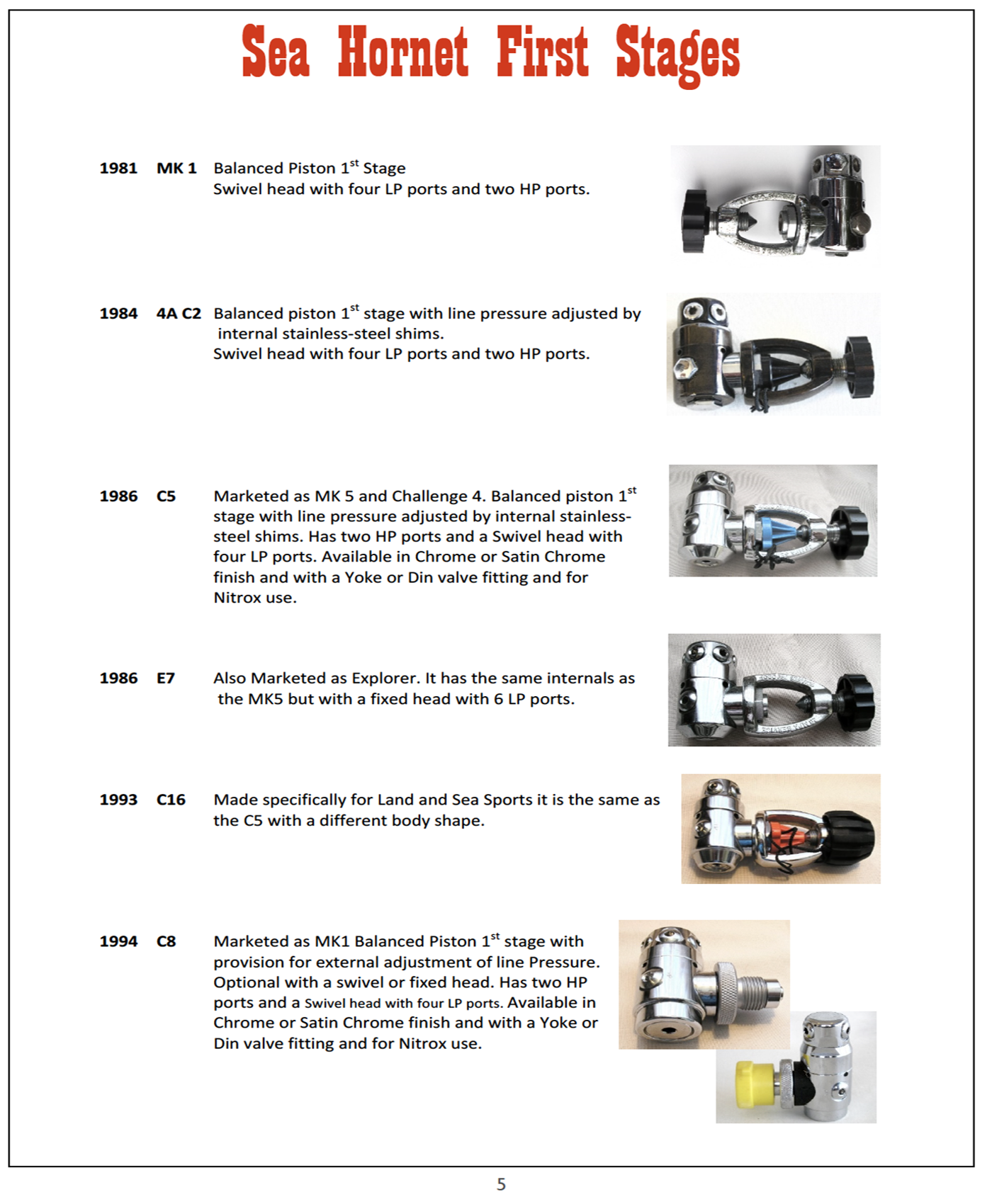 |
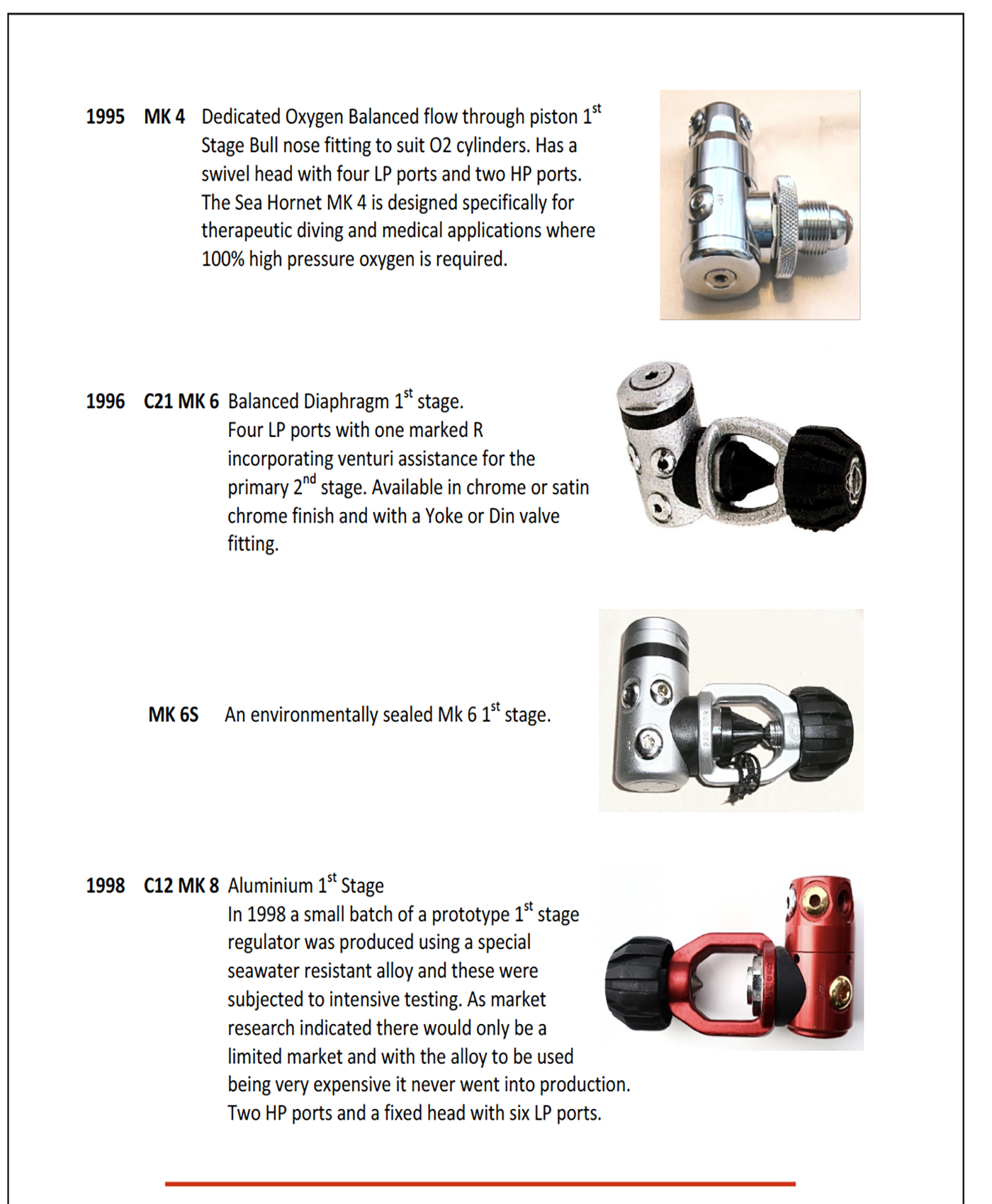 |
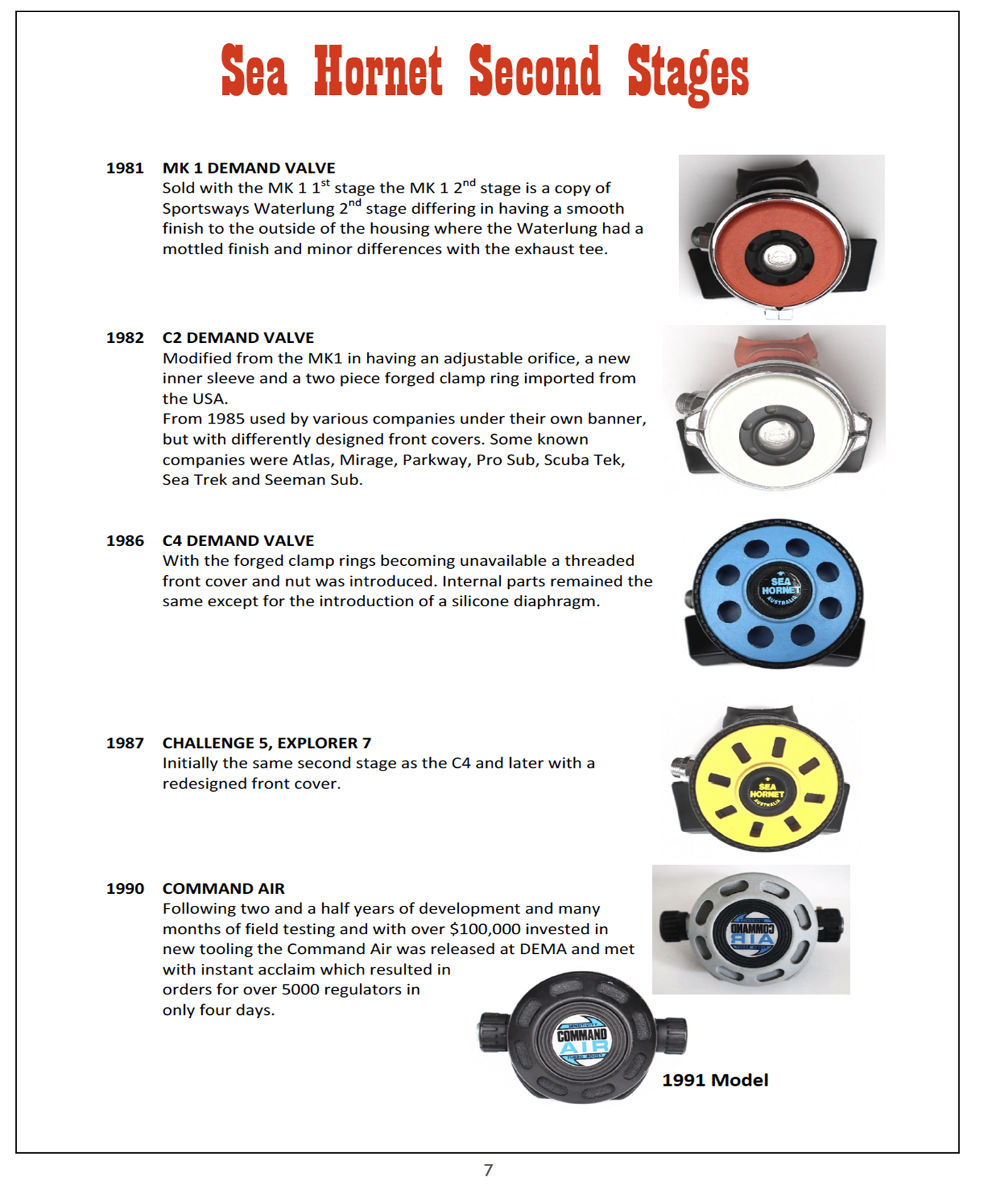 |
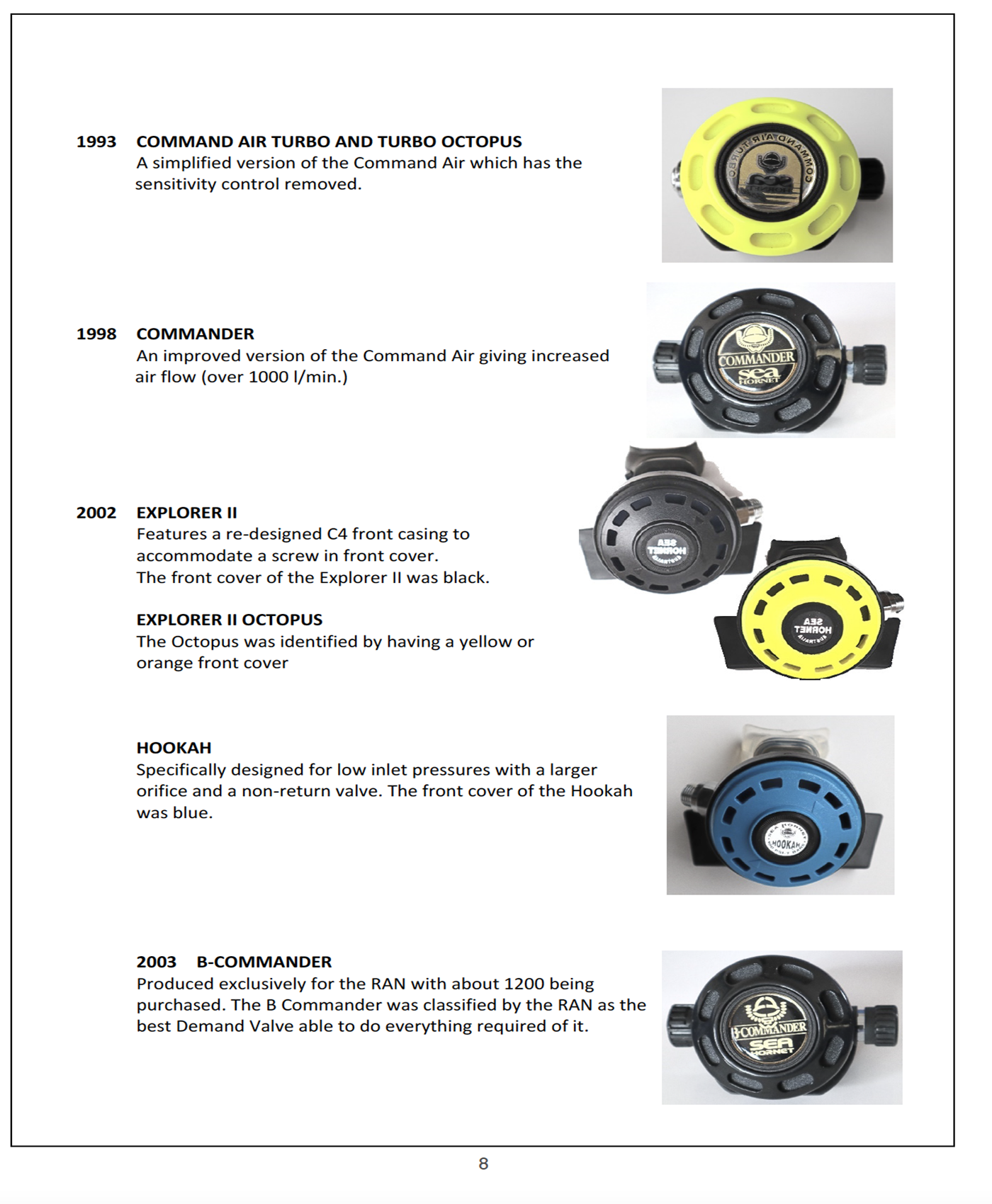 |
T.D. Preece & Co Pty Ltd continued to be managed by his wife Pam Preece (now deceased) and his three children, Kim, Glenn and Anne. The range of products became extensive in scuba, including the manufacture of high-pressure cylinder valves for various gases, and the distribution of aluminium and steel scuba cylinders.
It also included the manufacture and supply of military scuba diving equipment for the Australia’s defence forces, and a range of centrifugal blowers for the air-conditioning industry.
Kim left TDP in early 1991 and joined Uwatec AG in 1992, a Swiss dive instrument manufacturer. Glenn continued managing T.D Preece & Co Pty Ltd until early 2009 when he then purchased the company. The company eventually ran into financial difficulties and for a while was in receivership during 2009.
Financial problems continued with the company premises subsequently sold to recover debts. T D Preece & CO Pty Ltd was deregistered in September 2018. Today the company and its assets, tooling and plant still belong to Glenn Preece.
Author's note - A large and diverse range of Spearfishing and scuba diving equipment was supplied under the Sea Hornet brand and it has not been possible to cover their full range of products in this review. Mel Brown
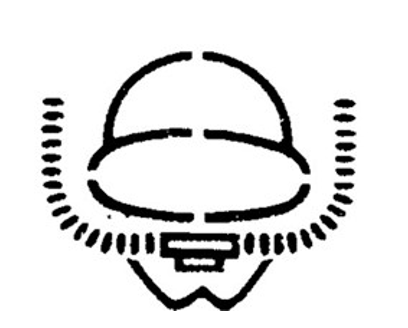
_____________